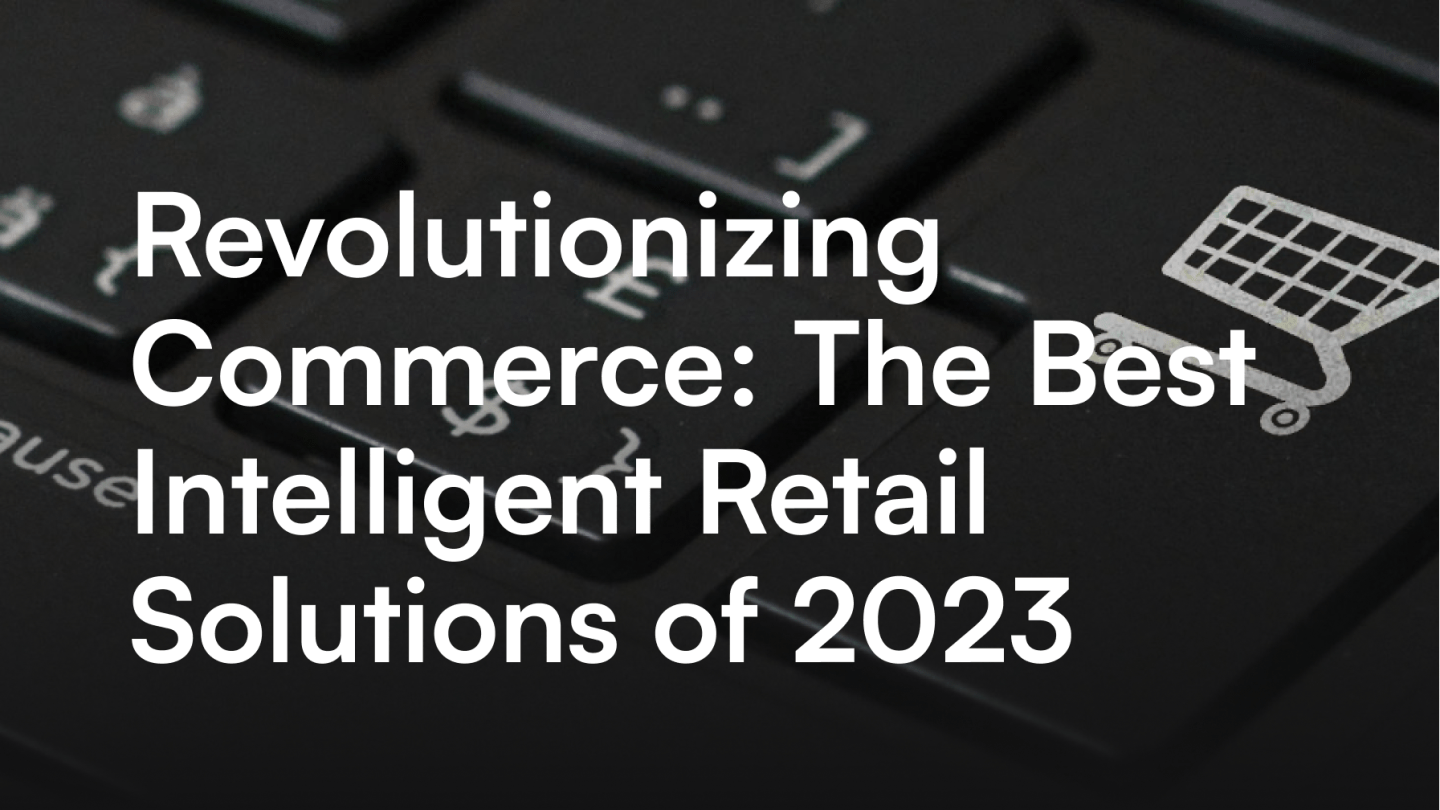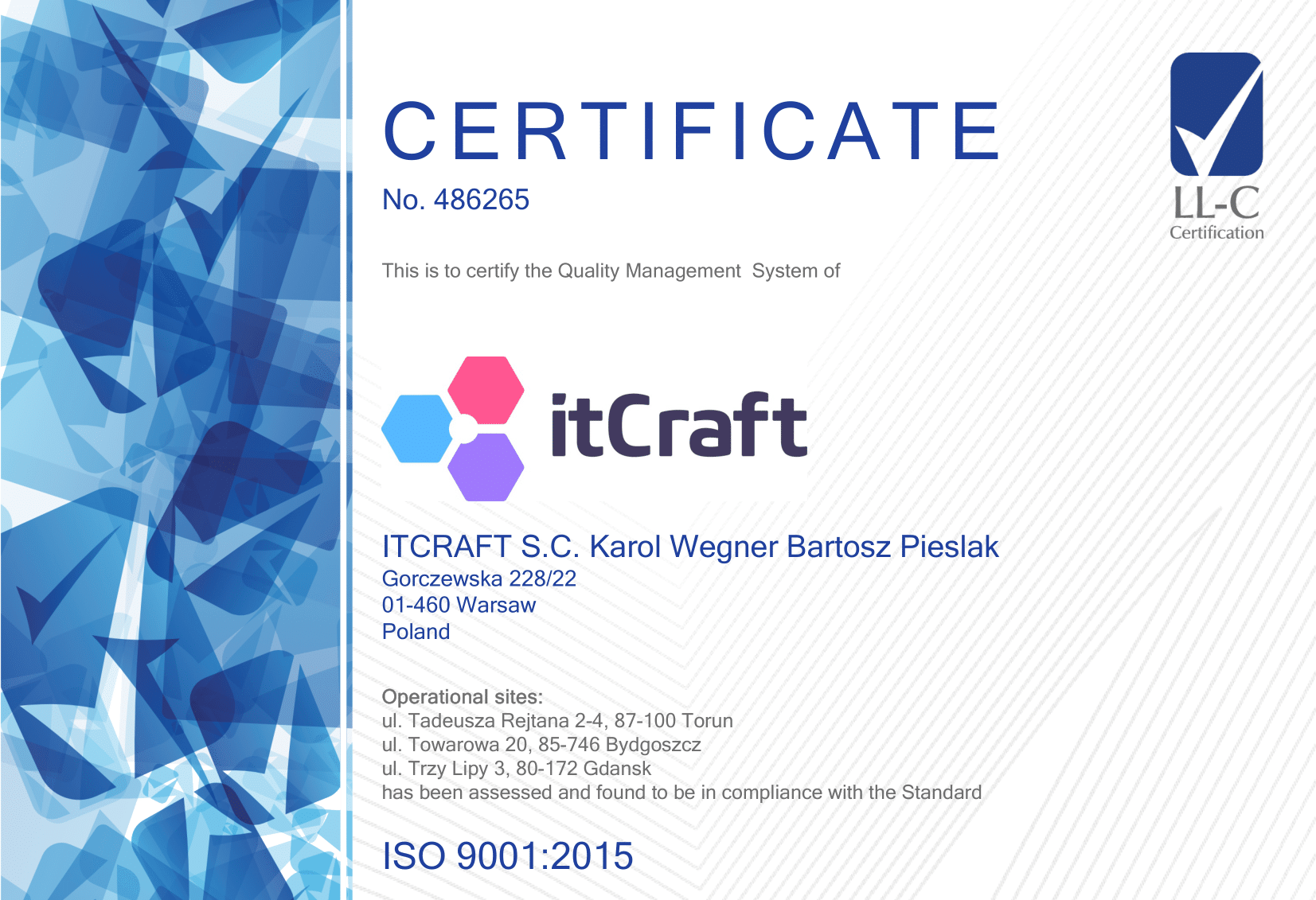Revolutionizing Commerce: The Best Intelligent Retail Solutions of 2023

Krzysztof Hubnicki

As the world continues to embrace digitization, the retail industry stands at the forefront of this transformation, incorporating innovative technologies to enhance the shopping experience and increase operational efficiency. In the following piece, we explore the leading-edge retail solutions that are not only shaping the sector today but are also expected to drive it in the coming years.
From in-store analytics to IoT, AI to mobile payment solutions, we delve into what makes these solutions stand out in the crowded landscape of retail technology. Whether you’re a retail business owner, a tech enthusiast, or a curious consumer, this article will provide insightful glimpses into the future of retail shaped by smart solutions. So, without further ado, let’s dive into the exciting world of intelligent retail technologies of 2023.
Table of contents
1. Introduction: The Evolution of Retail in the Digital Age
2. Understanding Smart Retail: Definition and Key Components
3. The Top Smart Retail Solutions in 2023: An Overview
- 3.1 In-Store Analytics
- 3.2 Artificial Intelligence and Machine Learning
- 3.3 Augmented Reality and Virtual Reality
- 3.4 Internet of Things (IoT)
- 3.5 Mobile Payment Solutions
4. Exploring Individual Solutions in Depth
- 4.1 Benefits and Use Cases of In-Store Analytics
- 4.2 How AI and ML are Revolutionizing Retail
- 4.3 The Role of AR and VR in Enhancing Shopping Experience
- 4.4 IoT in Retail: Applications and Benefits
- 4.5 How Mobile Payment Solutions are Simplifying Commerce
5. Future Trends in Smart Retail Solutions
6. Conclusion: The Impact of Smart Retail Solutions on the Future of Commerce
1. Introduction: The Evolution of Retail in the Digital Age
The retail landscape has witnessed unprecedented change over the past decade, fueled by technological advances and changing consumer behavior. From brick-and-mortar stores to e-commerce platforms, and now to smart retail, the industry’s transformation is a testament to the power of digital technology. As we enter the year 2023, the industry finds itself at the precipice of another revolution – Smart Retail.
In the age of the Internet of Things (IoT), artificial intelligence (AI), and machine learning (ML), the traditional retail model is rapidly evolving to meet the demands of tech-savvy consumers. This new retail model, aptly termed ‘Smart Retail,’ combines physical and digital environments, blurring the lines between ‘online’ and ‘offline’ shopping experiences.
Smart retail is not just about employing the latest technologies; it’s about using these technologies to create more personalized, seamless, and engaging shopping experiences. It’s about harnessing the power of data to gain insights into customer behavior, optimize operations, and ultimately drive growth. As we navigate through this era of digital transformation, understanding and adopting smart retail solutions becomes increasingly crucial for businesses seeking to stay ahead of the curve.
The following sections provide a deep dive into the leading smart retail solutions of 2023, demonstrating how they’re enhancing the retail landscape and paving the way for the future of commerce.
2. Understanding Smart Retail: Definition and Key Components
Smart Retail can be best defined as the integration of advanced technologies into retail operations to create a seamless, efficient, and personalized shopping experience. It’s about combining the physical and the digital, the human and the artificial, to transform the retail landscape.
There are several key components that make up the ecosystem of smart retail:
- Data Analytics: The cornerstone of smart retail, data analytics, involves collecting and analyzing large volumes of data to gain insights into customer behavior, preferences, and trends. These insights are used to enhance the customer experience, improve decision-making, and drive operational efficiency.
- Artificial Intelligence (AI): AI in retail is used in various ways, from chatbots providing customer service to algorithms predicting future sales trends. AI helps retailers automate repetitive tasks, offer personalized customer experiences, and make more informed decisions.
- Internet of Things (IoT): IoT connects everyday objects to the internet, making them smarter and more efficient. In retail, IoT can be seen in smart shelves that alert when stock is low or in smart mirrors that allow customers to virtually try on clothes.
- Augmented Reality (AR) and Virtual Reality (VR): These immersive technologies provide customers with unique and interactive shopping experiences. For instance, AR apps can show how furniture might look in a customer’s home, while VR can offer virtual tours of a store.
- Mobile Payment Solutions: The rise of digital wallets and mobile payment apps have made transactions quicker, easier, and safer, enhancing the checkout experience for customers.
Each of these components plays a crucial role in shaping the smart retail landscape of 2023, as explored in the following sections.
3. The Top Smart Retail Solutions in 2023: An Overview
As we delve into the world of smart retail, it’s important to highlight the top solutions shaping the industry. These solutions combine innovation with practicality, enhancing various aspects of the retail experience. Here’s an overview of the top smart retail solutions in 2023:
- 3.1 In-Store Analytics: In-store analytics use technologies like sensors, beacons, and video cameras to collect data about customers’ in-store behavior. This data can provide insights about customer footfall, dwell time, path through the store, and interactions with products, helping retailers optimize store layout, product placement, and sales strategies.
- 3.2 Artificial Intelligence and Machine Learning: AI and ML are revolutionizing the retail industry, from personalized product recommendations to intelligent customer service chatbots. By analyzing customer data, these technologies can predict customer behavior and preferences, enabling retailers to provide personalized experiences and make better business decisions.
- 3.3 Augmented Reality and Virtual Reality: AR and VR technologies are enhancing the shopping experience, making it more interactive and immersive. From virtual try-on features in fashion retail to AR-powered product visualizations in furniture retail, these technologies are blurring the lines between the physical and digital retail worlds.
- 3.4 Internet of Things (IoT): IoT technologies connect devices and systems in the retail environment, creating a network of interconnected elements that can communicate with each other. This can enhance efficiency and customer experience, with applications ranging from smart shelves to automated checkouts.
- 3.5 Mobile Payment Solutions: Mobile payment solutions have become increasingly popular, enabling fast, easy, and secure transactions. By integrating these solutions, retailers can provide a seamless and convenient checkout experience, reducing queues and improving customer satisfaction.
Each of these solutions is reshaping the retail industry in its own way, contributing to the emergence of a smarter, more efficient, and customer-centric retail environment. In the following sections, we’ll explore each of these solutions in more depth, highlighting their benefits and use cases.
4. Exploring Individual Solutions in Depth
Each of the smart retail solutions offers unique benefits and applications. In this section, we delve deeper into each solution, exploring their impact and how they’re revolutionizing the retail industry.
- 4.1 Benefits and Use Cases of In-Store Analytics: In-store analytics provide critical insights into customer behavior, enabling retailers to optimize store layouts, product placements, and promotional strategies. They can reveal peak shopping times, popular product categories, and patterns in customer paths, contributing to increased sales and improved customer experiences.
- 4.2 How AI and ML are Revolutionizing Retail: AI and ML are not just buzzwords but powerful tools driving personalization, automation, and predictive analytics in retail. From AI-powered chatbots that deliver personalized customer service, to ML algorithms predicting future sales trends, these technologies are making retail operations more efficient and customer-centric.
- 4.3 The Role of AR and VR in Enhancing Shopping Experience: AR and VR technologies are transforming the way consumers shop. By creating immersive and interactive experiences, these technologies can increase customer engagement and satisfaction. From virtual try-on features in fashion retail to AR-powered product visualizations in furniture retail, AR and VR are redefining the shopping experience.
- 4.4 IoT in Retail: Applications and Benefits: IoT is making retail operations more efficient and customer-friendly. With smart shelves that notify when stock is low, to automated checkouts for a frictionless shopping experience, IoT is contributing to a smarter, more connected retail environment.
- 4.5 How Mobile Payment Solutions are Simplifying Commerce: Mobile payment solutions are making transactions quicker, easier, and safer. By offering a seamless and secure checkout process, mobile payments can enhance customer satisfaction and drive repeat business.
Each of these solutions leverages technology to enhance different aspects of the retail experience, and their successful integration is shaping the future of the retail industry.
5. Future Trends in Smart Retail Solutions
As we look ahead, it’s evident that smart retail solutions will continue to evolve and shape the future of the retail industry. The convergence of technologies like AI, IoT, AR/VR, and mobile payments is leading to the creation of increasingly seamless and personalized shopping experiences. Here are some of the emerging trends that we anticipate will influence smart retail solutions in the near future:
- Hyper-Personalization: With the increasing use of AI and data analytics, retailers will be able to understand their customers at an individual level, offering hyper-personalized shopping experiences that cater to each customer’s preferences and behavior.
- Voice Commerce: As voice-activated devices become more prevalent, voice commerce will grow in significance. Customers will be able to search for products, make purchases, and receive personalized recommendations all through voice commands.
- Smart Supply Chain: IoT will play a significant role in creating smart supply chains. With real-time tracking and predictive analytics, retailers will be able to optimize inventory management, reduce costs, and improve efficiency.
- Immersive Shopping Experiences: The integration of AR and VR technologies will continue to provide immersive and interactive shopping experiences, bridging the gap between online and offline retail.
- Sustainable Retail Practices: As sustainability becomes a key consumer concern, retailers will leverage technology to offer eco-friendly shopping experiences. This could include initiatives like virtual fitting rooms to reduce returns and AI-powered systems to optimize energy use in stores.
While it’s difficult to predict the exact path of evolution for smart retail solutions, it’s clear that technology will continue to be a key driver in shaping the future of the retail industry.
6. Conclusion: The Impact of Smart Retail Solutions on the Future of Commerce
The integration of smart retail solutions in the retail industry is not a trend of the future—it’s the reality of today. As we navigate through 2023, these technologies are revolutionizing how retailers operate and how customers shop, shaping a new era in the world of commerce.
In-store analytics, AI, AR/VR, IoT, and mobile payment solutions are not just enhancing the retail experience—they are redefining it. They are driving personalization, improving operational efficiency, and creating unique, immersive shopping experiences that meet the evolving demands of today’s tech-savvy consumers.
As retailers continue to adopt and integrate these smart solutions, they are creating a retail landscape that is smarter, more connected, and more customer-centric. It’s a landscape where technology and human touch go hand in hand, enhancing not only the shopping experience but also the way retailers manage their businesses.
Indeed, smart retail is the future of commerce. As this future unfolds, it will be fascinating to see how these solutions evolve and continue to transform the retail industry. And as we’ve seen, those retailers who embrace these changes will be the ones best positioned to thrive in this new retail era.






